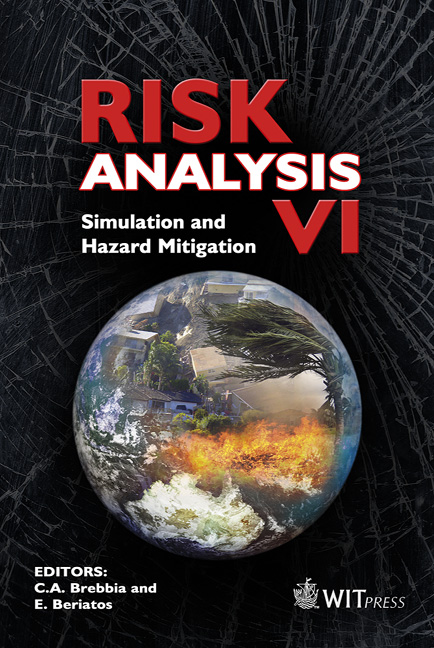Occurrence Neighbourhoods And Risk Assessment From Landslide Hazard In Northern Spain
Price
Free (open access)
Volume
39
Pages
13
Page Range
29 - 41
Published
2008
Size
2,383 kb
Paper DOI
10.2495/RISK080041
Copyright
WIT Press
Author(s)
A. G. Fabbri, J. Remondo, C. Ballabio, S. Poli, C. F. Chung & H. J. Scholten
Abstract
This contribution analyzes the problem of selecting the desirable characteristics of a study area when using geo-information for natural risk assessment. Shape, boundary, density of detail of the study area and the distribution of hazardous occurrences can be fundamental in conditioning the estimation of values in a map of expected risk. A study area in the Basque Country of northern Spain is used in which previous studies produced maps of risks for linear infrastructures, land uses and buildings, from thousands of shallow translational landslides. The area is reconsidered here in terms of five telescopic sub-areas corresponding to different neighbourhoods of the landslide occurrences. The results of the corresponding hazard predictions are interpreted via prediction-rate tables and curves obtained from blind tests, i.e., prediction maps obtained using only part of the occurrences cross-validated with the distribution of the remaining occurrences. The subsequent introduction of socioeconomic thematic maps and scenarios enables the derivation of risk maps based on the prediction rates, the hazard maps and the socioeconomic indicator values. The comparison of the risk maps from the different study-area datasets is used to assess their impact on risk values and to provide guidance on how to perform the selection maintaining greater significance. A critical issue is the loss of significance when reducing study area neighbourhoods closer or further away from the hazardous locations. The application is an example of a general purpose spatial predictive modelling processing strategy for which dedicated software has been developed. Keywords: study area selection, landslide hazard prediction, risk assessment, blind tests, spatial prediction modeling.
Keywords
study area selection, landslide hazard prediction, risk assessment, blind tests, spatial prediction modeling.





